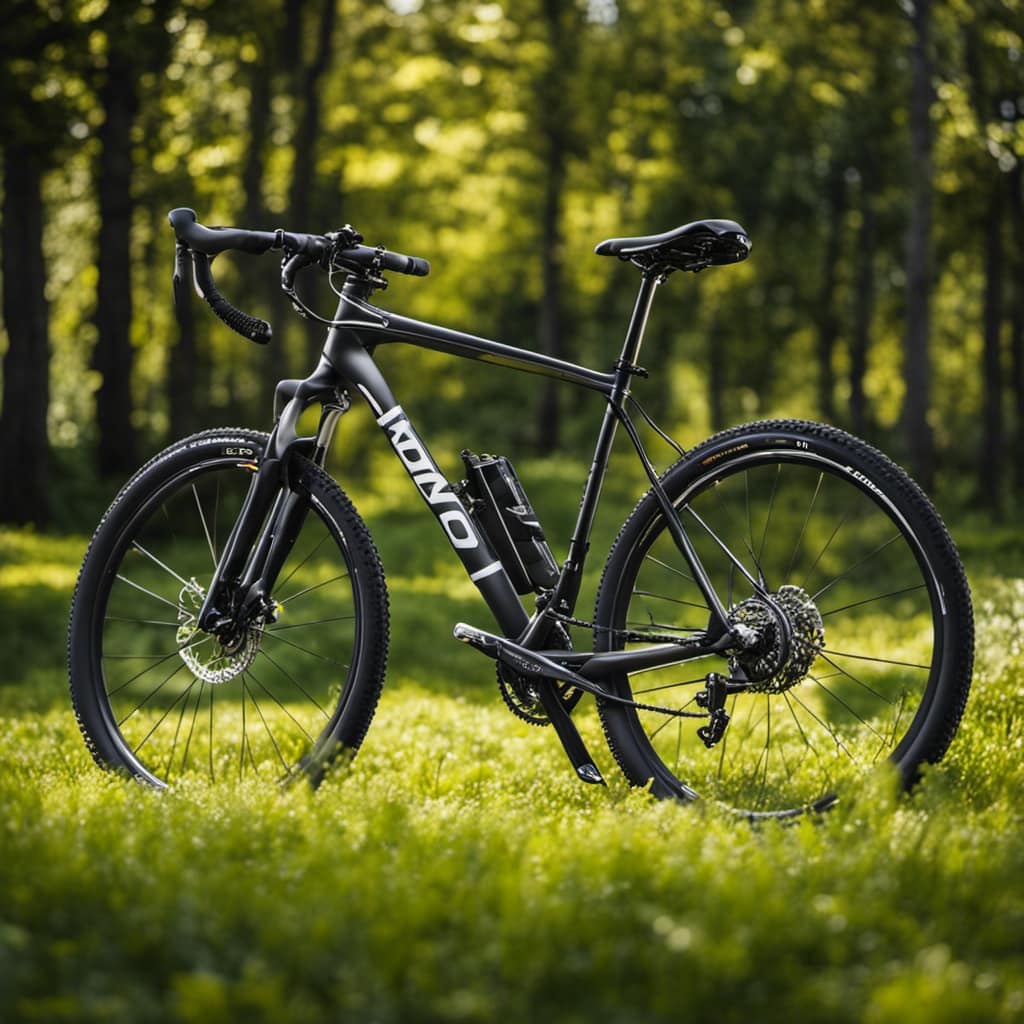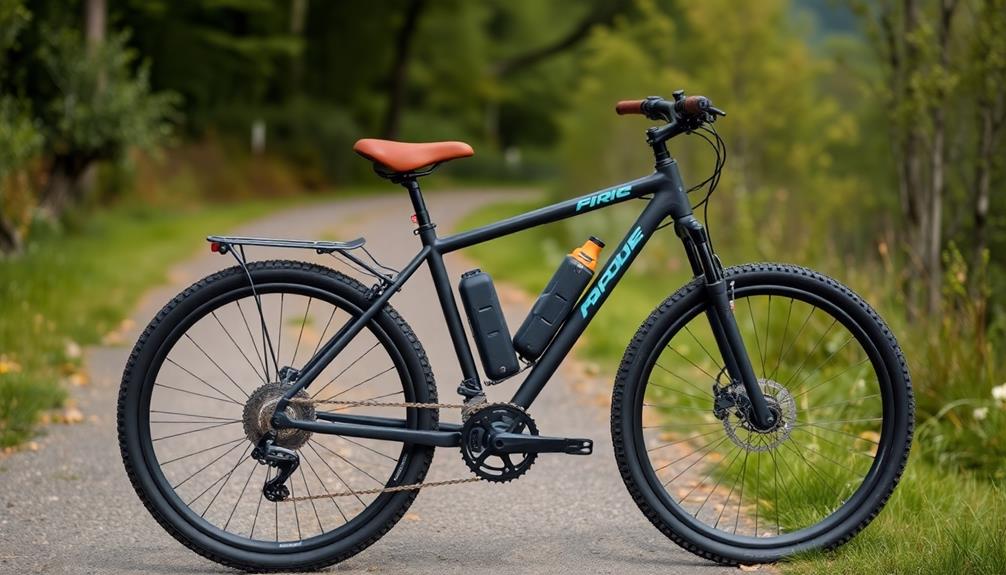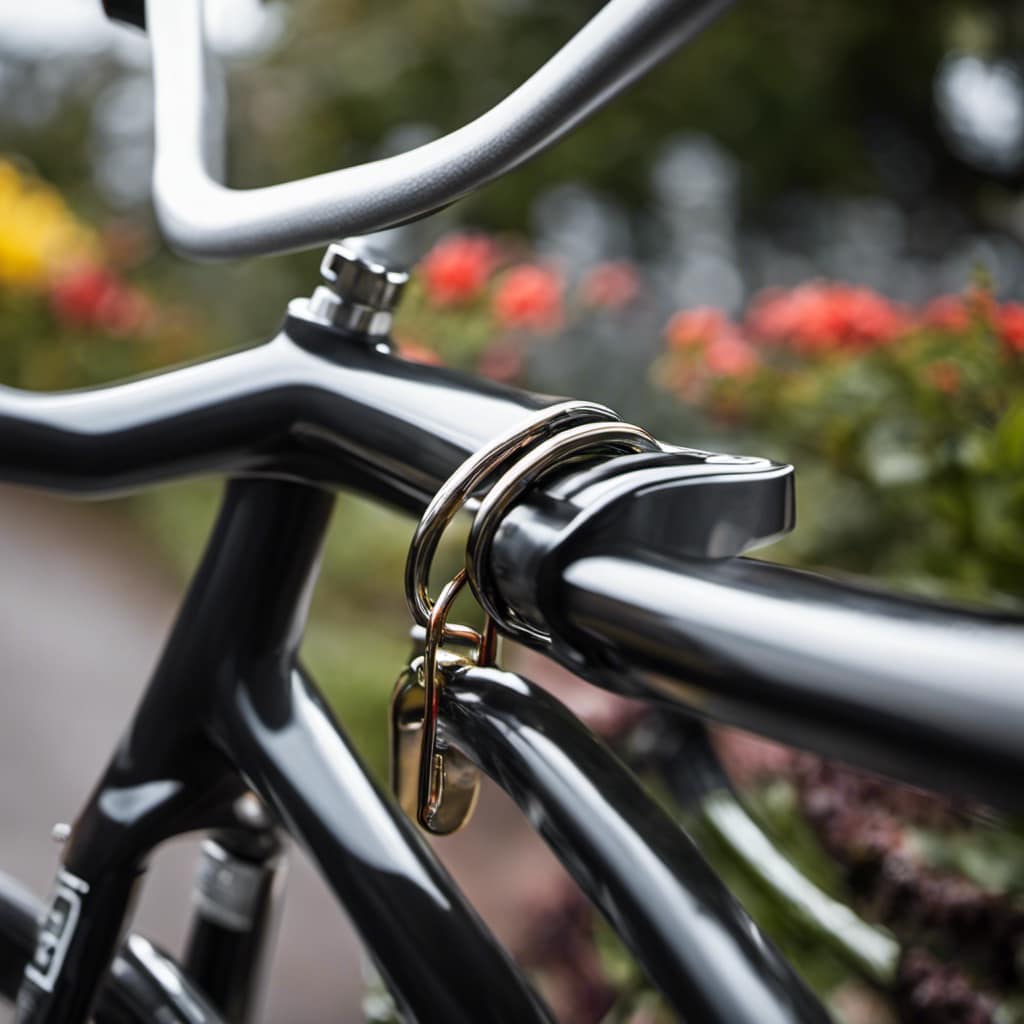As a woman, discovering the ideal bicycle that ticks every box for comfort, style, reliability, and affordability can be a challenge. Historically, women’s choices in bicycles have been somewhat restricted. However, the landscape has shifted significantly with the introduction of hybrid bikes for women. Now, the playing field has transformed, offering better options than ever before!
These modern-day marvels are the perfect combination of mountain and road bikes – making them versatile enough for any terrain. Plus, they come with all the bells and whistles you’d expect from a quality bike: adjustable handlebars, shock absorbers for extra comfort, and even built-in lights. It’s no wonder hybrid bikes are becoming increasingly popular among female riders.
But what really sets hybrid bikes apart from other models is their ability to provide freedom. With these two-wheelers, you get the freedom to explore new places without worrying about getting stuck in traffic or running out of gas. That’s why they’re a great choice for those who want some adventure in their lives but don’t necessarily want a full-fledged motorbike!
Hybrid Bikes For Women
Have you heard the buzz about hybrid bikes for women? It seems like they’re taking the cycling world by storm. These innovative, versatile rides offer countless benefits to female riders everywhere – and could be just what we need to make a game-changing difference in our lives.
Let’s take a look at the overview of hybrid bikes. What do they have to offer? Hybrid bikes come in all shapes and sizes, ranging from low-step frames to full-suspension mountain bikes. They generally feature wider tires than road bikes, along with upright handlebars and relaxed geometry for more comfort and control on bumpy roads. Depending on your needs, you can find a hybrid bike that offers various features such as disc brakes, suspension forks, multiple gears, and more.
When it comes to shopping for a new hybrid bike, there are plenty of options out there – so it pays to do your research. Consider the type of terrain you’ll be riding on most often when choosing the right model for your lifestyle or activity level. Additionally, consider any accessories or components you may want to add later. With all these points in mind, you’re sure to find the perfect fit!
Now that we know what hybrid bikes have to offer let’s take a look at some of their advantages…
Advantages Of Hybrid Bikes
There are many reasons why hybrid bikes are so popular with female riders. From their ease-of-use to their versatility, women can reap many benefits from choosing a hybrid bike. Here are just a few of the advantages:
- Women-specific Design: Hybrid bikes for women are designed with women’s specific needs in mind. This includes things like shorter top tubes, lowered standover heights, narrower handlebars, and more comfort-oriented contact points such as saddles and grips. As a result, these bikes offer an incredibly comfortable ride that caters specifically to female riders.
- Ease-of-Use: With multiple gears and disc brakes, hybrid bikes make it easy to navigate any terrain or obstacle with ease. Whether you’re cruising down the street or tackling rocky trails, you can count on your trusty hybrid bike to get you where you want to go without any trouble.
- Versatility: Hybrid bikes offer the perfect combination of both road and mountain bike features – making them ideal for any situation or activity level. From commuting to casual weekend rides, these bikes give you the freedom to take on any challenge that comes your way!
- Comfort: With upright handlebars and relaxed geometry, hybrid bikes provide plenty of comfort on even the bumpiest roads – making them perfect for long rides or daily commutes alike! Plus, they come in all sorts of sizes and styles to fit every body type and riding style out there – ensuring that everyone can find the perfect fit for their individual needs!
With so many great benefits, it’s no wonder why hybrid bikes have become so popular among female riders across the globe – they truly are a game changer! And with so many different types available today, let’s take a look at what options are out there…
Types Of Hybrid Bikes For Women
With the surge in popularity of hybrid bikes for women, there are now plenty of options to choose from. From traditional designs to modern technology, there’s something for everyone out there! Let’s take a look at some of the most popular hybrid bike styles and features today.
When it comes to hybrid bike designs, you can choose from a wide range of styles that cater specifically to female riders. Whether you’re looking for something more traditional or a more modern look, you can find exactly what you want with ease. Many companies even offer women-specific frames and components, making it easier than ever to find the perfect fit for your body type and riding style.
In addition to style, many women also appreciate the variety of features that come with a hybrid bike. From adjustable stem lengths and handlebars to disc brakes and multiple gears, these bikes provide plenty of versatility – allowing riders to customize their ride according to their needs and preferences. Plus, many hybrid bikes come in different sizes so you can ensure that your new ride will fit like a glove!
Overall, when shopping for a hybrid bike for women there are plenty of great options out there – it just takes some time and research to make sure you get the best one for your needs! Now let’s take a look at some essential considerations when shopping for the perfect bike…
Essential Considerations When Shopping For A Hybrid Bike
When it comes to shopping for a hybrid bike for women, there are many factors to consider that will ensure you get the best ride possible. From frame size to suspension systems, gear range and more, here are some essential considerations when looking for the perfect bike.
First off, finding the right frame size is key. A frame that’s too small or too large will not only make your ride uncomfortable but it can also be dangerous. Make sure that your bike’s stand-over height fits you properly – if it’s too high or low, then the frame size isn’t right. Additionally, look into the type of suspension system your bike has if you plan on riding over rough terrain – this will help to keep you comfortable while riding.
Next up is determining what type of gears and handlebars you need for your riding style. Generally speaking, a bike with multiple gears is ideal as it allows you to adjust your pedaling speed depending on terrain changes and other factors. Also, take a look at the handlebar type – some bikes come with dropped handlebars which allow for a more aerodynamic posture during long rides but may not be ideal for short rides in hilly areas.
Finally, make sure that the brakes on your hybrid bike are suitable for your needs. Disc brakes offer more consistent stopping power than rim brakes but may require more frequent maintenance due to their complexity. Alternatively, rim brakes tend to be simpler and require less upkeep but they don’t provide as much stopping power as disc brakes do. So take some time to consider which brake type works best for you before buying!
Frequently Asked Questions
What Type Of Terrain Is Best Suited For A Hybrid Bike?
Have you ever been out on a bike ride, feeling the wind whip through your hair and knowing that nothing can hold you back? Well, when it comes to finding the perfect bike for your needs, hybrid bikes are a game-changer. But what type of terrain is best suited for a hybrid bike?
When it comes to terrain, hybrid bikes are incredibly versatile. They can handle various types of terrain from mountain biking to urban cycling and recreational to commuting. For example, if you’re looking for an adventure and want to take on some mountain biking trails or hilly terrain, then a hybrid bike is ideal with its sturdy frame and wide tires. On the other hand, if you’re more into recreational rides around town or cruising along flat roads while commuting, hybrids provide excellent shock absorption and smooth riding experiences. And finally, if you’re into urban cycling like navigating city streets or going off-road occasionally, then hybrids are great due to their agility and ability to take on tight corners.
No matter what type of terrain you decide to explore on your hybrid bike, one thing’s for sure: it will be designed for maximum performance so that nothing can keep you from enjoying the freedom that comes with riding one. Whether it’s downhill mountain biking or simply taking a leisurely ride in the city – this type of bike will give you the confidence and control that no other style of bike can offer.
So hop on board your hybrid bike and get ready for any kind of adventure – there’s no better way to experience true freedom!
How Much Does A Hybrid Bike Typically Cost?
How much does a hybrid bike typically cost? This is an important question for anyone looking to invest in one of these versatile bikes. Fortunately, there is a wide range of hybrid bikes available at different price points, making it easy to find the perfect bike within your budget.
When it comes to the cost of a hybrid bike, women’s hybrid bikes tend to be the most affordable option. This is because they are typically smaller and lighter than men’s hybrids, so they don’t require as many expensive components. Plus, with so many brands focusing on producing quality women’s hybrids, prices have started to come down in recent years. Hybrid bicycles prices range from around $200 up to several thousand dollars depending on the model and features you’re looking for.
Thankfully, if you’re shopping on a budget there are still plenty of great options out there. Here are just a few tips for finding an affordable hybrid bike:
- Look for used models – Many second-hand dealers stock good quality hybrid bikes that won’t break the bank.
- Shop around online – With reputable websites like eBay and Craigslist offering some really great deals on hybrid bikes, you can often find exactly what you need without spending too much money.
- Consider buying in bulk – If you’re planning on buying multiple hybrids, look for retailers that offer discounts when buying more than one at a time.
No matter what your budget may be, with some research and patience you should be able to find an amazing hybrid bike that meets all your needs without breaking the bank! So why not start looking today and discover just how far your money can go when it comes to investing in a high-quality hybrid bike?
Is A Hybrid Bike More Comfortable Than A Road Bike?
Have you ever wondered whether a hybrid bike is more comfortable to ride than a road bike? If you’re a woman who’s considering switching to cycling, this is an important question. The answer may surprise you.
A hybrid bike is designed with both road and mountain biking in mind, making it the perfect choice for women who want to take on multiple terrains while still enjoying comfort. Unlike a road bike, which can be less forgiving on rough surfaces or bumps, a hybrid bike has shock-absorbing technology that helps reduce fatigue and stress on the body. This means that not only will you be able to handle various terrains, but also enjoy superior comfort while doing so.
The cost of a hybrid bike can range from $300 – $2,500 depending on the type of model and components you choose. But when compared with the cost of maintaining a road bike, which can add up quickly over time due to its higher maintenance requirements, investing in a hybrid might be worth it for many women looking for an all-in-one solution.
On top of being more affordable and adaptable to multiple terrains, they’re also incredibly comfortable – so much so that some cyclists refer to them as “magic carpets” due to their smoothness and lack of jolts during rides! So if you’re looking for freedom without sacrificing comfort or style – consider getting yourself a hybrid bike today.
How Often Should A Hybrid Bike Be Serviced?
So, you’ve got a hybrid bike and you’re wondering how often it needs to be serviced? Well, regular maintenance is essential for the longevity of your bike. But what’s the ideal service frequency?
Let’s start with some basic bike servicing intervals. Your hybrid bike should be serviced every six months or 1,000 miles (whichever comes first). This will ensure that any worn parts are replaced before they become a safety hazard. You should also lubricate all moving parts every three months to maintain peak performance.
When it comes to hybrid bike maintenance, there are some simple things you can do yourself to keep your ride in top shape. Make sure you check your tires regularly for wear and tear and replace them as soon as possible if necessary. Additionally, cleaning and oiling your chain every few weeks will help keep it running smoothly.
Taking the time to properly maintain your hybrid bike is key for enjoying trouble-free rides in the long-term. By following these basic tips, you’ll be able to get the most out of your investment while keeping yourself safe on the road!
Are Hybrid Bikes Good For Long Distance Cycling?
Soaring along the open road on a hybrid bike – what could be more freeing? Long distance cycling is one of the best ways to experience this liberating feeling, and hybrid bikes are an excellent choice for any cyclist looking to get out and explore. But are hybrid bikes good for long distance cycling? Absolutely! Let’s examine some of the benefits of choosing a hybrid bike for your next long-distance ride.
When it comes to hybrid bike distance, there’s no doubt that these two-wheeled wonders offer some serious advantages. Women’s hybrids are particularly well suited for long-distance rides due to their lightweight frames and reliable comfort. You can expect plenty of power from your hybrid as you pedal mile after mile – plus, you don’t have to worry about sacrificing speed in favor of stability since these versatile machines provide both. What’s more, they’re also generally more affordable than other types of bikes, making them a great option if you’re on a budget.
Finally, let’s not forget about the unique benefits that come with owning a hybrid bike. Not only do they offer great performance and reliability, but their design also makes them incredibly easy to maintain. Plus, most models come with sturdy components that stand up against wear and tear from regular use – a must if you plan on putting in some serious mileage over time! All things considered, it’s clear why so many riders are turning towards hybrids when it comes to long-distance cycling: they combine convenience with affordability and performance in one neat package. So if you’re looking for an adventure buddy that won’t break the bank or weigh down your journey, look no further than a trusty hybrid bike!
Conclusion
In conclusion, hybrid bikes for women are a game-changer for cyclists of all levels. Whether you’re an experienced cyclist or just beginning your biking journey, a hybrid bike can provide the perfect balance of comfort and speed to help you tackle any terrain.
Take my friend, Kelly – she recently bought a hybrid bike and is loving it. She says that with her hybrid she has been able to go longer distances without getting tired and sore, while also feeling like she’s still getting a great workout. The best part is that she didn’t have to break the bank to get her dream bike – the price was right!
Hybrid bikes are an excellent option for both recreational cyclists and more serious riders alike. They offer reliable performance at an affordable price point, and they can handle a variety of terrains quickly and comfortably. If you’re looking for a way to take your cycling experience to the next level, then consider investing in a hybrid bike today!









